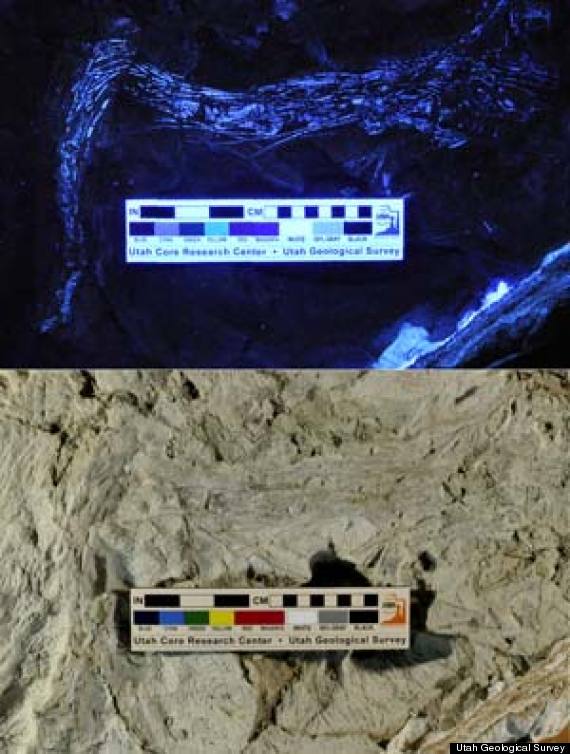 |
| A true colour and black-light images of the fossil remains |
Since then many species of this highly intelligent, nocturnal hunter have been discovered. Some with giant claws at the end of long arms.
 |
| Vertebrae from Yurgovuchia doellingi |
Analysis revealed that they came from an unknown species: it was named Yurgovuchia doellingi, a Native American word for 'coyote' on account of its size and after Helmut Doelling whose geological surveys of the area led to the discovery of the bone bed. Intriguingly, fragments of the creature were uncovered in the region in 2005. Excavations revealed a partial pelvis and some vertebrae, but it was only with the recovery of more complete specimens that the new species was identified.
Its size and morphology suggests that it may be an ancestor to Utahraptor, immortalized in the programme Walking with Dinosaurs. While Yurgovuchia is the first new species from the Doelling Bone Bed, the team also uncovered the remains of a long-necked dinosaur which may be a new species of sauropod, alongside another five bizarre specimens which may also represent now extinct gene pools: to quote Dr Kirkland, 'it's real exciting!'